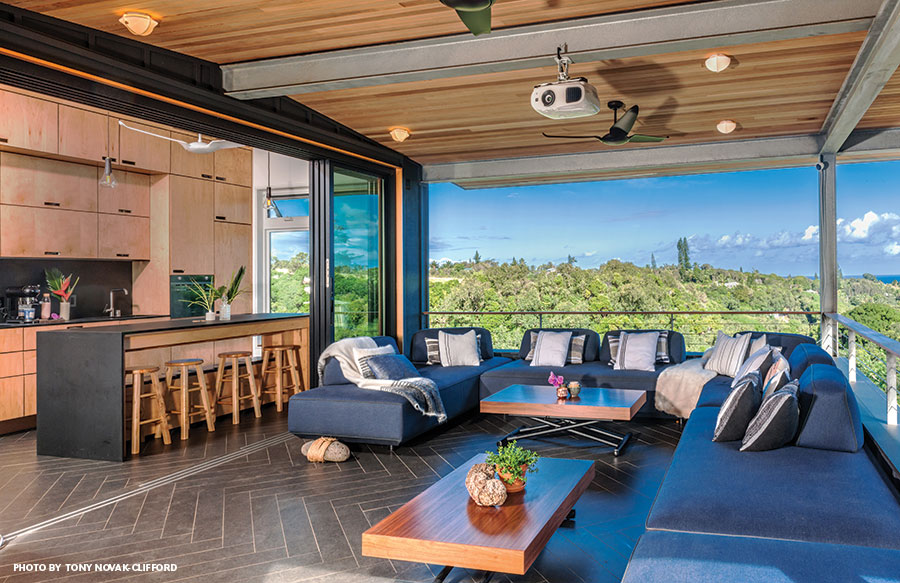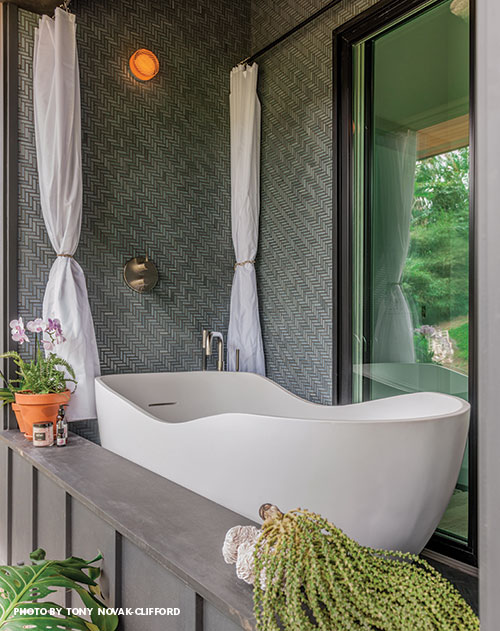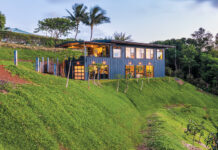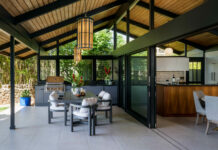
An avid surfer, kiteboarder, and stand-up paddler, Graham would routinely fly from New York to Maui, and would stay with his cousin Chelsea Hill at her home in Ha‘ikū. “I always came in the dead of winter—for obvious reasons,” he laughs. He’d stay in a 200-square-foot cabin—which had neither a kitchen nor a bathroom—on Chelsea’s property. In 2011, his cousin offered to sell him the two-acre vacant parcel behind her home, and he pounced on the opportunity. “I told myself I’d do something with it at some point,” Graham says.

That point came in 2016, when he hooked up with architect and engineer David Sellers. They had met years before in New York, but lost touch when David moved to Europe to attend graduate school. Neither knew the other was on Maui until one of Graham’s associates spotted David’s updated profile on LinkedIn. (Remarkably, David was living less than a mile from Graham’s property.)
The two met for lunch one day and Graham shared his plans for LifeEdited’s first project in Hawai‘i. He wanted to build an off-the-grid family home—one that would harvest more energy and water than it consumed—on his Ha‘ikū property. David signed on as the architect and engineer; Graham also tasked him with designing the home’s water, wastewater and energy systems. Right off the bat, the project presented a strategic challenge. A single dirt driveway was the only way to access the small construction site at the summit of the steeply sloping property. To prevent a congested work area, David imposed a strict timeline for the delivery and use of materials and equipment. And given the difficult terrain, many components were fabricated off-site. All of the construction equipment operated on 100 percent biodiesel, including a pile driver that pummeled steel columns as much as nine feet into the ground. David and Graham opted to forgo a standard masonry wall in favor of galvanized steel—a more durable material, and one whose scraps could be more easily recycled. (In fact, the only concrete on the property is the garage floor slab and the driveway). Once the home’s skeleton was complete, David handed the project off to general contractor Massimo Pandolfi to finish the structure.





